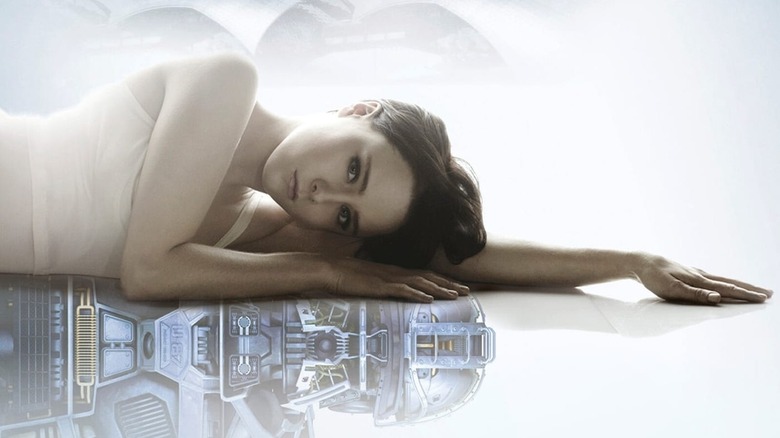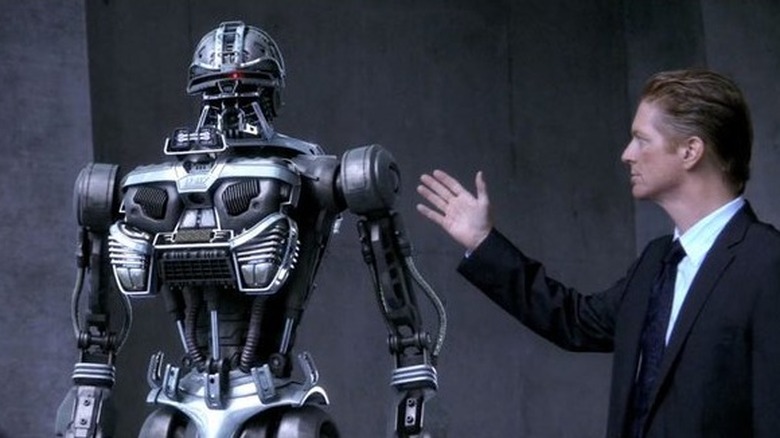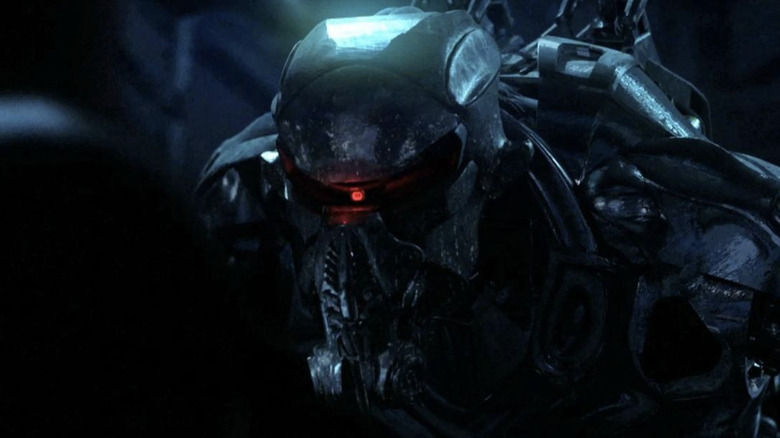Why Battlestar Galactica's Spin-Offs Didn't Work, Straight From The Co-Creator [Exclusive]
For the 15th anniversary of the "Battlestar Galactica" finale, I spoke with several of the show's writers and actors for an inside look at how it reached that conclusion. One of them was David Eick, the series' co-creator (with Ronald D. Moore). I asked the man who resurrected "Galactica" out of its campy 1970s roots why attempts to keep the franchise going faltered.
You see, "Battlestar" hadn't even been finished a year when a prequel spin-off debuted: "Caprica," an ensemble drama set more than 50 years before the series on the eponymous planet (one of the 12 colonies razed by the robotic Cylons at the outset of "Battlestar Galactica"). The series debuted in January 2010 and wrapped that November after a single, 19-episode first season — its planned multi-year run aborted by low ratings.
Next, Eick and co. pivoted with "Battlestar Galactica: Blood and Chrome," a second prequel (but after "Caprica") set during the first human/Cylon war. This one followed a young William Adama (the lead of "Battlestar," now played by Luke Pasqualino) as he served on the Galactica as a fighter pilot. "Blood and Chrome" didn't make it past the pilot stage (which was later released as a web series, broken up into 10 12-minute episodes).
"Battlestar Galactica" was the Sci-Fi Channel's biggest hit. Like "Game of Thrones," it was a genre show so good that critics weren't embarrassed to praise it or list it in the same breath as non-fantasy programming. Why wasn't Sci-Fi able to keep hatching eggs from its golden goose?
The Fall of Caprica
Eick said that, unlike "Battlestar Galactica" — where he and Moore discussed in detail ahead of time what they wanted the show to be, if not every direction they planned for the story to take — "Caprica" lacked a singular guiding ethos. The show tackled corporate espionage, religious extremism, artificial intelligence, virtual reality, immigrant identity, organized crime, boarding school drama, and that's not all. Just look at the title sequence, which transitions from one main character (in completely separate locations) to the next, showing how tangentially connected they all were. This left the show with plodding pacing (I'll admit I struggled to get through it).
Eick continued:
"Ron's involvement vacillated so there was less consistency and less reliability and, as we shored up his absence, I don't think the people we had in place to do that were the right people, to be totally frank. And I think there were maybe some questionable casting decisions with that one."
Indeed, "Battlestar" scored a huge win in securing veterans Edward James Olmos and Mary McDonnell as the series' leads while discovering great talents like Tricia Helfer, Katee Sackhoff (these days seen on "The Mandalorian"), and James Callis. Eick opined, and I agree, that many of the series' supporting cast (made up of local Canadian day players like Michael Hogan, Aaron Douglas, Alessandro Juliani, Kandyse McClure, etc.) evolved from background faces to part of the series' heart. With "Caprica," though? None of the characters were compelling enough to latch onto.
"I think there were people trying to emulate when Ron would get really hippie-dippy metaphysical with 'Battlestar,' and then sometimes it'd get a little wobbly," Eick recalled. "When you don't have his high-wire act ability — which is, let's say, successful more often than it isn't — and you're trying to emulate it, it can become mush really quick. Just like, 'What are you talking about here?' So we ran into that buzzsaw."
Battlestar Galactica: Blood and Chrome
"Caprica" aired its first 10 episodes from January to March. When it returned in October, it never reached more than a million viewers and the network pulled the plug after episode 14 (the remaining five episodes aired in Canada and were released on DVD before U.S. broadcast in 2011).
Eick feels that they had started to turn the show around by the end, and given the chance to execute their plans for season 2, they could've won the audience back. "It was 51/49, man, it just went the other way and we didn't get that second season. If we'd had the second season, we may have been able to rescue that one."
He wasted no time partnering with fellow "Battlestar" alum Michael Taylor for "Blood and Chrome." (Moore, who'd moved to Sony, was not formally involved.) If "Caprica" was "Dallas" with robots, this one would be Saving Private Ryan" and "Band of Brothers" with robots, emphasizing the action-packed side of "Battlestar Galactica" rather than the philosophical one. Unfortunately, though, the network wasn't buying it. In 2009, Sci-Fi changed its name to Syfy and was trying to branch out from science-fiction programming. There was an upswing in the channel's reality TV output during the early 2010s, when "Blood and Chrome" was being made. Eick says that Syfy's management thought "Maybe we need to move on from 'Battlestar" as part of this strategy. "Blood and Chrome" was in the wrong place at the wrong time.
There have been intermittent rumblings of a new "Battlestar Galactica" project since, but nothing concrete has made it past early development. Oh well — we'll always have the 2003 series.


